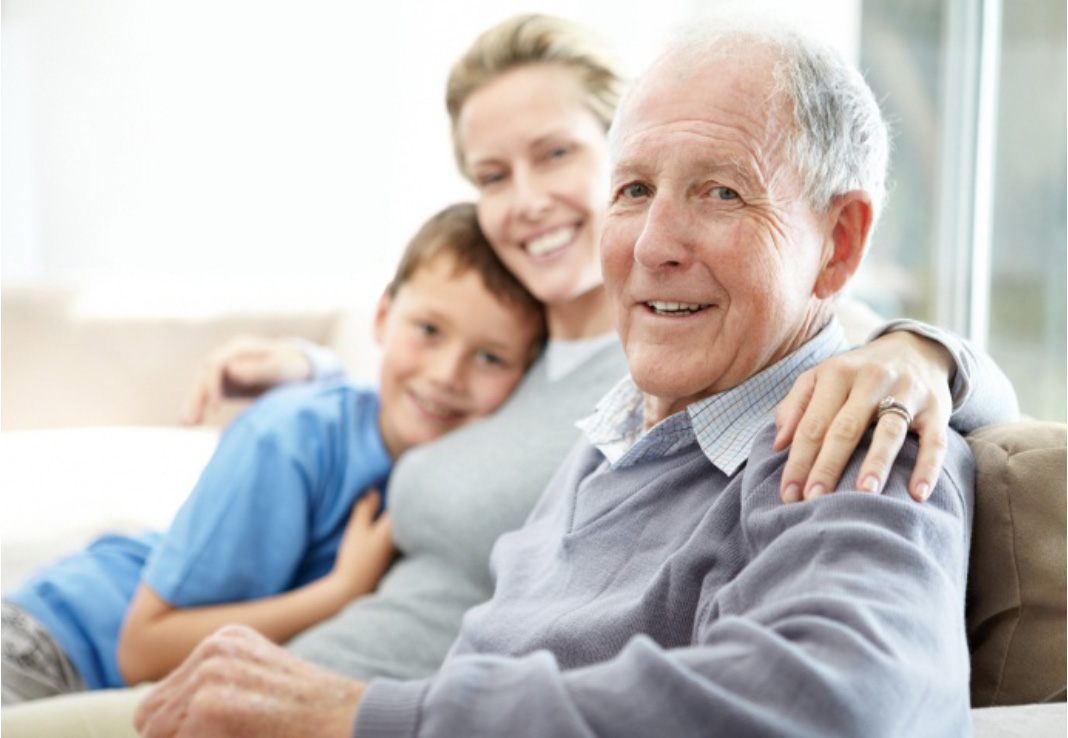Caregiving 101
Who are Family Caregivers?
A family caregiver is anyone who is helping someone in daily activities without receiving any type of pay for their assistance. Family caregivers may be a spouse, adult child, sibling or other relative. A close neighbor or friend can be a caregiver. Caregiving experiences vary, from short-term experiences to life-long journeys and caregivers may take on various roles. These roles may include help with activities of daily living (ADLs) which include bathing, dressing and grooming and instrumental ADLs (IADL) such as cooking, house work and managing medications.
Did You Know?
In the U.S., 10,000 people turn 65 every day. Their care may at some time be the responsibility of their families or friends. This means most of us will take care of a family member or know someone taking care of a family member within our lifetime.
Stages of Care
There are five stages of care in which we often  find families. Can you identify with some of the roles listed above? If so, are you
currently a caregiver, and at what stage of care are you and your family experiencing?
find families. Can you identify with some of the roles listed above? If so, are you
currently a caregiver, and at what stage of care are you and your family experiencing?
Support from Family Caregivers
- Pre-Care
This is the stage where any pre-planning for caregiving occurs. You may be anticipating care for another or for increasing demands while actively caring for someone. You may need to ask yourself: What planning have you considered doing, but have yet to do? - Care Activation
This is where families are actively aware of and engaged in care. There is an intentional and conscious plan that is being activated. In this stage, families are aware and begin to talk about caregiving as an active process. - Crisis Care
This stage is characterized by immediate crisis or chaos, such as a fall or unexpected hospitalization. The family is pulled into an abrupt care situation. Common risks are: action before communication and loss of autonomy for person receiving care. - Sustained Care
This stage is characterized by longer-term care, with periods of adjustment. Families may settle into a way of doing their work; making it difficult to change patterns. This factor shows the importance of long-term planning, as well as flexibility during times of crisis. - Care Transitions
Care transitions can mean a major change in care (move from home to facility) OR an end to care, as with death. This stage requires role changes, new plans and often new services. During any of these stages of caregiving, communication, autonomy and needs and expectations of the entire caregiving family should be considered.
Communication
It is important to remember that communication is a two-way street. Listen so the other person feels heard and understood. You can still listen, even if you do not agree. When caregiving, it can be easy to think and talk for the person for whom you are caring. Ask yourself, “Have I heard my family’s opinions?” “Are we communicating well? “What can be done to communicate better?”
Autonomy
Autonomy is the right to make our own choices. We may begin to lose our autonomy as we age. It is important for all of us to remember that just because someone can no longer do certain things for themselves, this doesn’t mean they need everything done for them. When caregiving, even if our care recipient cannot do things the way they used to, help them be involved in finding alternatives.
Needs Expectations
Individual needs and expectations can be spoken and unspoken. Often in family caregiving, needs and expectations can compete with one another and threaten the autonomy or independence of the care recipient. Making sure that everyone’s needs and expectations are heard and understood keeps the lines of communication open.
The Aging Network
The Aging Network is a combination of people and services that are in place to help support individuals as they age. Focus is placed on home and community-based services (as opposed to facility care), which puts family caregivers in the center of responsibility. The legislation which comprises the aging network includes:
Support from a Medical Team
- Federal-Older Americans Act (OAA). Organizes support and
 services for older adults.
services for older adults. - State of Oklahoma – The CARE Act. Supports family caregivers by requiring hospitals to include and educate them.
- Educational programming for older adults and caregivers
- Respite services
- Adult day programs
- Advice in planning care
1. Healthcare Resources
Home health
Home health is provided by a licensed health professional in the home rather than
being administered in a hospital or skilled nursing facility.
Long-term care facilities
- Assisted living centers
- Nursing homes/skilled nursing
- Long-term care
Physical therapy
The role of physical therapy is to improve an individual’s movement and manage pain.
It helps in the rehabilitation and treatment of chronic conditions, illnesses or injuries.
Occupational therapy
Occupational therapy is the therapeutic use of everyday activities, as well as speech
therapy, to help individuals with skills needed for daily living.
2. Non-healthcare side of the aging network
Respite Care: Respite is a term that defines a number of programs available to caregivers who need extra help or some time off. These programs include the following models of care:
- Social Model: focuses on social support of participants.
- Medical Model: focuses on therapeutic and health-related services for the care recipient.
- Special Services Model: services specifically designed to help individuals with needs such as Alzheimer’s, other forms of dementia or developmental disabilities.
Support groups and counseling: Support groups can offer caregivers a place to talk
with other individuals with similar experiences. Many Area Agencies on Aging also
provide individual counseling to family caregivers.
Nutrition Services
- Congregate Meals: Meal sites provide nutritious meals to individuals over the age of 60.
- Home-Delivered Meals: Programs such as Meals-on-Wheels or Mobile Meals allow for nutritious meals to be delivered to individuals who are unable to attend congregate meal sites.
Transportation Services: Most public transportation services for seniors are strictly
to help them get to their doctor appointments.
Some communities try to supplement this with transportation provided by volunteers
due to the lack of funding available.
Long-term care Ombudsman: The role of the ombudsman is to be an advocate for residents in nursing or other residential facilities. There is a state ombudsman who works with local volunteers.
Where can individuals and families find the help they need?
- Dial 2-1-1 for a directory of services and resources
- Area Agencies on Aging – Find the office that provides services in your area
- Oklahoma Department of Human Services, Helpline at
1-877-751-2972
Oklahoma Caregiving Education Program can be accessed at okcep.okstate.edu - The Aging Network, dial 1-800-677-1116. On the Eldercare Locator webpage, you can type your zip code or city and find aging related resources near you.
Next Steps
With information and new goals set in the caregiving role, be sure to take time for yourself. Time for yourself isn’t selfish — when you feel better, you’re a better caregiver. When you hit your limits, it’s time for some self-care. It could be as simple as a morning sleeping in without interruption or a night at the movies. Reach out for help and take time to nurture yourself. Your needs are as important as the family member receiving care from you! For more information about the many aspects of the caregiving role, please look to other fact sheets in our Caregiving Series.
References
Hogan, P. (2011). It’s not your father’s longevity anymore! Vital Speeches of the Day, 77(5), 184-187.
Milligan, C., & Power, A. (2009). The changing geography of care. In T. Brown, S.
McLafferty, & G. Moon (Eds.), A companion to health and medical geography (pp. 567-586).
Singapore: Wiley-Blackwell.
Pietrangelo, A. (2016). 10 things to add to your caregiver tooklit. Downloaded from healthline.com September 22, 2019.
Emily Roberts, Ph.D.
Assistant Professor
Kristopher M. Struckmeyer, Ph.D.
Assistant State Specialist for Caregiving
Whitney A. Bailey, Ph.D.
Associate Professor
Luis Mejia P., M.A.
Doctoral Student
Sarah R. Gordon, Ph.D.
Associate Professor
